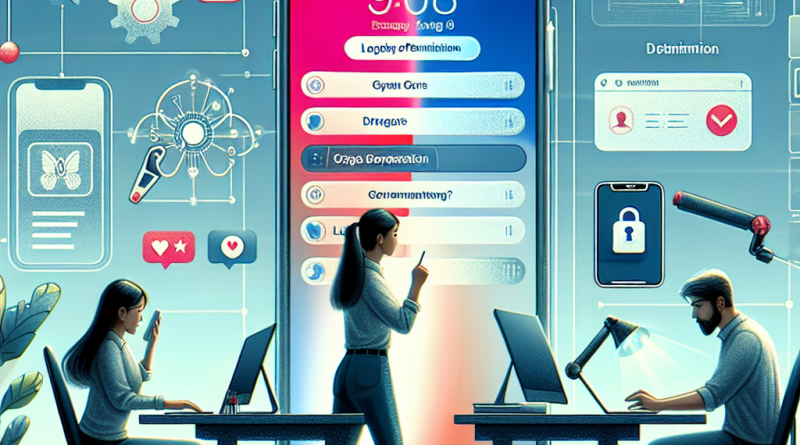The iOS 26 Privacy Sprint: A Freedom Revolution or a Walled Garden?
In the ever-evolving world of digital innovation, Apple has once again stirred the waters with the release of iOS 26. Touted as the most privacy-focused update to date, it’s the kind of change that has Silicon Valley buzzing and digital consumers debating. At iphone26.com, we had front-row seats to this unfolding drama, and we’re here to walk you through the twists, turns, and trade-offs that come hand-in-hand with iOS 26 privacy settings.
The Good: A Fortress of Privacy
Apple didn’t just double down on privacy in iOS 26—it built a fortress. The new privacy settings are no longer tucked away at the bottom of the settings menu like a whispered secret. They now take center stage with granular controls, allowing users to dictate precisely how and when their data is accessed.
Location access? You can now allow apps to use your proximity without revealing your exact GPS coordinates. Photo permissions? Select individual pictures for each app instead of your entire library. Browsing history? Safari now creates sandboxed sessions with tracker-thwarting AI to stop prying eyes dead in their digital tracks.
But Apple hasn’t stopped at device-level privacy. With iOS 26, Mail, Messages, and even FaceTime have baked-in encryption layers that now rival those in enterprise-grade security apps. For privacy advocates, this update is nothing short of a knight’s armor for your digital soul.
The Bad: Walled Gardens Grow Thicker
But let’s be honest—no victory is without its shadows. By building an impregnable privacy fortress, Apple may also be slowly turning iPhones into digital islands.
Developers are frustrated. The stricter rules around ad tracking and the suppression of third-party cookies make it nearly impossible for small businesses and indie developers to monetize in-app content effectively. If your app doesn’t align with Apple’s principles, expect it to be nerfed or buried under layers of permission prompts.
And for users? The constant barrage of privacy pop-ups may start to feel less empowering and more exhausting. Consent fatigue is real, and iOS 26 doesn’t always offer a smooth ride through the settings jungle.
Even tech-savvy enthusiasts are beginning to ask: Where does privacy enhancement end and curated ecosystem control begin? Apple’s increasing ability to gatekeep third-party experiences is threatening the very openness that originally drew millions to the iPhone ecosystem.
The Curious Middle Ground
There’s no question that iOS 26 is bold. From a digital ethics standpoint, it’s a manifesto—an imprint of Apple’s identity cast in binary and encryption. But some users are wondering whether Apple’s privacy policies are altruistic or just exceptionally clever branding.
Think about it: by locking down data, Apple forces developers to use its in-house tools (hello, App Tracking Transparency), which generates its own revenue ecosystem. So while your data sleeps peacefully within a walled garden, Apple’s profit vines quietly climb ever higher.
Privacy is power, and iOS 26 takes this literally. The power is shifting—out of the hands of big ad-tech, yes, but perhaps too heavily into Apple’s hands alone.
iOS 26 and Your Digital Destiny
The real magic of iOS 26 lies not in its features but in the choices it hands back to you. You now have the power to decide not just who sees your data, but when, where, and even how. But like all powerful tools, it demands responsibility—and awareness.
At iphone26.com, we believe in harnessing that power, not ignoring it. If you’re a tech enthusiast who thrives on owning your digital narrative, this isn’t just another iOS update. It’s your call to action.
And if you’re looking to truly take control of your communications and mobile identity, check out www.conXhub.com. ConXhub gives you the freedom to manage communications like a pro—multi-numbering, call logging, and privacy-first calling that seamlessly blends with your iOS lifestyle.
Final Thoughts: Is iOS 26 Really Worth the Hype?
As with all things Apple, iOS 26 is both a marvel and a maze. For privacy lovers, it’s a dream—airtight, intuitive, and bold. For those on the commercial side of the digital world, it’s a signal flare: adapt or be left in the digital dark.
Our take? iOS 26 privacy settings are indeed game-changing—but it’s a game with new rules. Whether you see it as a revolution in user advocacy or the slow tightening of Apple’s grip depends on which side of the digital fence you’re standing on.
Whatever your stance, one thing is certain—the future of privacy is no longer a whisper in the corner. Thanks to iOS 26, it’s front-and-center, etched into every tap, swipe, and scroll.

